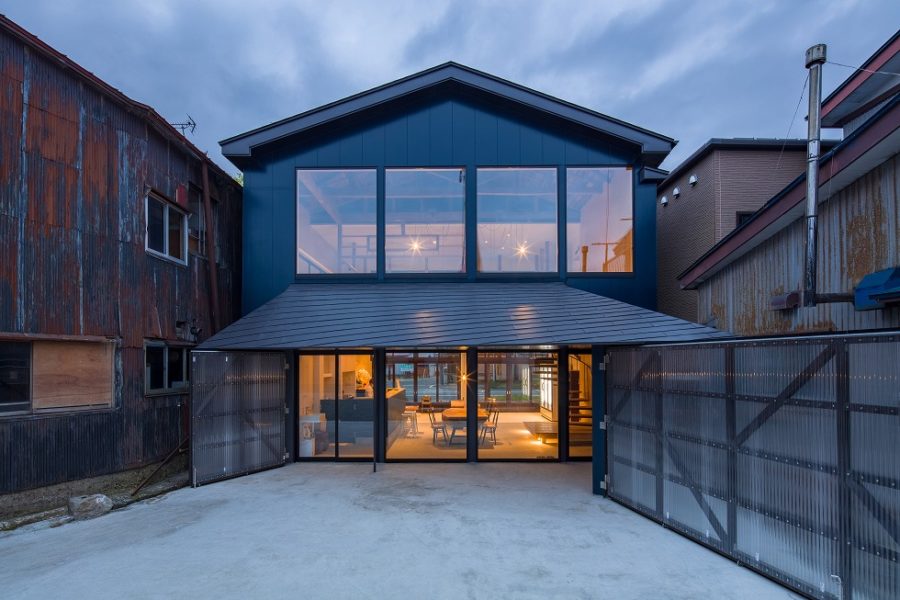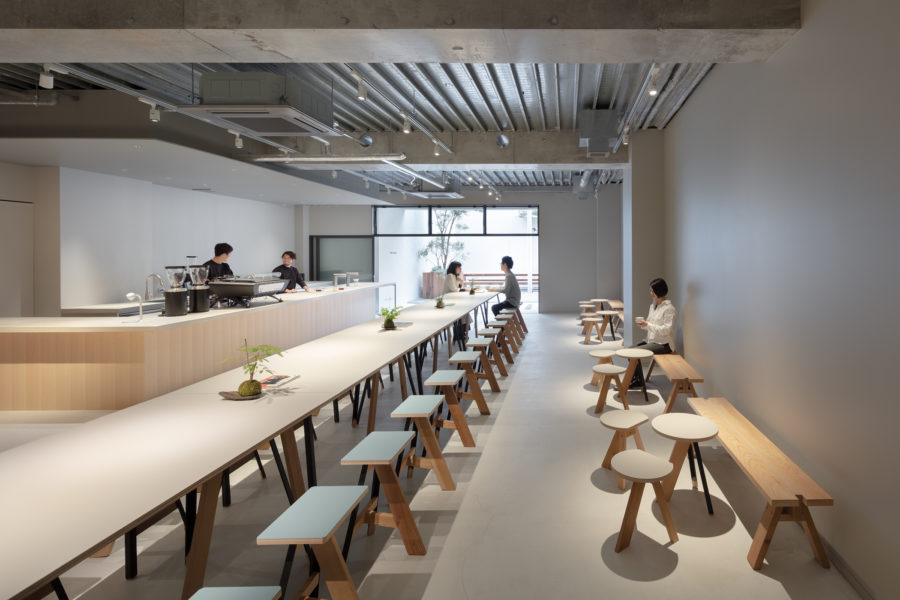都市部近郊に建つマンションの改修計画である。
戦後、高度成長期以降、日本の住宅やマンションは住宅需要に追いつくように早い、安いというコンセプトのもとに壁紙やビニルの床材などに代表される大量の工業製品で化粧された建物になった。ほとんどマンションはすべての住戸が同じプランで同じ方角を向き、住まい手の個性と日本の伝統産業、職人の仕事を奪ってしまった。その流れの見直しと個性を求める傾向からか、近年はそれとは違うマンションも少し見られるようになった気がする。
今回の物件は、これまでのマンションの計画とは違う方向を目指した。
プランは、南東の一番日当たりのよいところに寝室を配し、その隣のLDK が天井まで届かない独立壁と枠が家族の空気と気配をつなぎながら視線を遮っている。
また天井の折り上げ、仕上げの切り替えとともにリズミカルに連続して空間と家族を繋げている。マンションでは少ない自然光の入る浴室と洗面室、ゆったりとしたギャラリーのある玄関など「〇LDK」というデベロッパーや不動産業者の売りやすいマンションではなく、住んでいて気持ちのいい、使いやすいプランを目指した。
またクライアントは、とても素材の好きな方であった。1つひとつの仕上げにとても愛着心があった。そのため「素足で歩いて気持ちがよい」や「触りたくなる」など、人間の五感を刺激して、また職人が手づくりしている国産の材料を1つのアートだという考えにこだわった。(子浦 中)
Mansion renovation where you can enjoy the handicrafts of craftsmen with all five senses
It is an improvement plan for an apartment building in the suburbs of an urban area in Japan. After the war, following the period of rapid economic growth, Japanese houses and apartments became cosmeticized with large quantities of industrial products represented by the likes of wallpaper and vinyl flooring materials, based on the concepts of quick and cheap, to catch up with the demand for housing. The dwelling units in almost all the apartments had the same plan and faced the same direction, depriving the residents of individuality and Japanese traditional industries and craftsmen of work. Perhaps from an inclination to revisit this course of events and to seek individuality, in recent years, I feel that I have also started seeing a few apartments that are different from this. For this property, I aimed for a different direction than previous apartment building plans.
The plan places a bedroom in the sunniest place on the southeast, and in the combined living room, dining room, and kitchen next to it, a self-supporting wall and frame which does not reach the ceiling block the line of sight while connecting the atmosphere and presence of the family.
In addition, together with transitions of the finishing touches, the recessed ceiling continues rhythmically, connecting the space and the family. I aimed for an easy-to-use plan which was comfortable to live in, rather than the industrialized easy-to-sell apartment building of a developer or a real estate agent with a bathroom and washroom with abundant natural light and a spacious entrance with a gallery, which is rare in apartment buildings. In addition, the client was someone who really liked materials. They were very attached to each finish. For this reason, we were particular about the idea of the domestic materials stimulating the five human senses, such as feeling good walking on them in bare feet, or wanting to touch them, and being handmade by the craftsmen as a kind of art. The tiles, carpets, knobs, wooden latticework, and lacquered doors, in particular, were made in long-established production areas in Japan. I hope that the ideas of the client and myself will be somewhat helpful in Japanese craftsmanship, the experience of craftsmen, and the succession of traditional industries. (Ataru Shio)
【handcraft house】
所在地:千葉県
用途:共同住宅・集合住宅
クライアント:個人
竣工:2018年
設計:シオ建築設計事務所
担当:子浦 中
照明設計:杉尾篤照明設計事務所
什器:クレド
家具:TIME&STYLE、アルフレックス
施工:イシマル
撮影:淺川 敏
工事種別:リノベーション
構造:RC造
延床面積:102.17m²
設計期間:2017.05-2017.11
施工期間:2017.12-2018.02
【handcraft house】
Location: Chiba, Japan
Principal use: Housing complex
Client: Individual
Completion: 2018
Architects: Shio Architect Design Office
Design team: Ataru Shio
Lighting design: Sugio Lighting Design Office
Appliance: CREDO
Furniture: TIME&STYLE, arflex
Contractor: Ishimaru
Photographs: Satoshi Asakawa
Construction type: Renovation
Main structure: Reinforced Concrete construction
Total floor area: 102.17m²
Design term: 2017.05-2017.11
Construction term: 2017.12-2018.02








